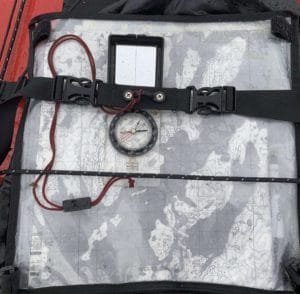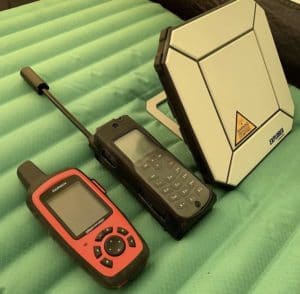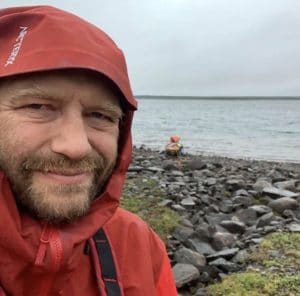Do you ever find yourself struggling to stay on track and complete a task that you’ve wanted to do for a long time?
Of course you have, and it’s completely normal! We all have moments where we just can’t seem to find any motivation.
Let’s talk about how to maintain motivation over the long haul.
How to Achieve Big, Hairy, Audacious Goals
Here’s the truth of the matter…
Achieving any big goal is going to take a LOT of time and effort. If it was easy then everyone would be doing it, right?
It doesn’t matter if you’re trying to get your BJJ black belt, graduate from college, shed 50 lbs of fat, or get that job of your dreams, along the way there are going to be buckets of blood, sweat and tears.
Succeeding at a difficult long term goal is a simple-but-not-easy two step process…
- First, you’ve got to get started, and
- Second, you’ve got to keep going till you finish
Easy to say, I know, but it’s the truth.
The funny thing is that step 2 (keeping on going) is often harder than getting started (step 1) just because the process takes so damn long. So it’s critical to have ways to maintain motivation in the face of adversity over the long haul.
Motivation During the 1,000 Mile Solo

Canoe packed and ready to go at daybreak on the Thlewiaza river, in the Barren Lands of Nunavut, Canada.
I have some tips that served me well for maintaining motivation during my 1,000 mile solo which are actually very applicable for most tough tasks in life.
The 1,000 Mile Solo was a canoe trip I did by myself, starting in Northern Saskatchewan, going through the treeline, out onto the Barren Lands tundra, and then down to Hudson Bay. This ancient route is very rarely travelled nowadays and much of it is hundreds of miles from the nearest other human being.
That lifelist item was completed on August 11th 2019 when I finally arrived in the Inuit village of Arviat in the Canadian arctic. The story of the trip and lots of pictures are here.
Motivation was important on that trip because I pushed very hard for a long time.
Although I had supplies for 50 days I went into full bat-out-of-hell mode and to get it done faster than that.I wanted to build up a time buffer because a single setback – recovering from an illness, healing from an injury injury, or a bad storm that left me windbound – could have easily added multiple days to the trip and I did NOT want to run out of food in the middle of the tundra!
On some days I spent up to 14 hours in the boat, not counting the 2 hours it took to break camp and load the boat in the morning and the 2 1/2 hours it took to make camp and eat dinner in the evening.
There wasn’t a lot of sleep and only one full day off which I only got because I was completely, utterly windbound on a mostly treeless stretch of the Thlewiaza river.
So for much of the trip I was exhausted, sore, and worn out. But each hour of paddling I did on any given day was one hour less I needed to do the next day.
Towards the end the day I would ask myself, ‘Have I done everything I can safely do today to get me down this river?’ And if the answer was, ‘No, you can still do more’ then I would keep on paddling for another couple of hours.
Motivating myself to get up in the morning, keep going through the day, and not stop in the evening was difficult. So I found ways to force, trick, bribe, cajole and force myself to keep going that I’m now going to share with you.
Here are 7 tips that you can use right now to get you on track and stay motivated so that you can accomplish whatever you set your mind to!
Tip 1) The Power of Momentum (or ‘Just the Tip’)

Paddling downstream on the Upper Thlewiaza River, approaching Nueltin Lake and the Barren Lands.
A canoe trip of a thousand miles begins with a single paddle stroke.
The most important thing about any large task is to get started. Once you’ve lurched into action then the odds that you’ll continue moving towards your goal are so much higher than if you’re sitting on the couch in contemplation.
The importance of developing momentum applied at multiple levels, including the initial decision to do the trip in the first place, crawling out of the sleeping bag at the beginning of each day, and putting the boat back in motion after each rest break.
Often those first few steps are the hardest. You’re exhausted. Your body aches. All you really want to do is pull the covers over your head and go back to sleep.
Get yourself started by telling yourself whatever lies or half truths you need to tell yourself to get your ass in gear.
On the paddling trip I would tell myself, “Just get in the boat and paddle for a couple hours – you don’t need to go very far today.” Inevitably then I would continue and put in a full day, travelling an additional 30, 40 or 50 km.
I use a similar trick for training BJJ and doing conditioning. When I’m feeling tired and debating whether I should go to the gym or not I tell myself that I only need to put on my gi or my gym clothes, and if after that I still don’t feel like training, then that it’s OK to bail out.
The reality is that I only end up invoking this bail out clause once or twice a year. But by having it there I end up doing a LOT more workouts than I would have if I’d navigated the question based on how I was feeling.
The tiny bit of wiggle room I leave myself gets me started, and then momentum carries me through the rest of the way.
I call this the ‘just the tip’ principle (just the tip, just for a second, just to see how it feels…).
The key thing is to develop some momentum and then, most of the time, the momentum will continue to carry you through the rest of the task.
The only caveat here is that sometimes pushing through despite all indications to the contrary will get you injured, sick or worse. You need to balance pushing yourself with a sense of when to quit. On a wilderness trip, for example, you can’t reduce your margin of safety so much that yourself into trouble. The self awareness required to do this is one of the hardest things to develop.
Tip 2) Break the Task into Small Pieces

Wading and tracking my boat upstream through the swifts of the Cochrane River in Northern Manitoba.
If you spend too much time wondering at the enormity of the giant task ahead of you then it can have a paralysing effect.
So break the giant task into smaller steps and spend the majority of your time thinking about how to complete the next of those smaller steps.
On this canoe trip didn’t spend a lot of time thinking about the entire 1,600 km distance I needed to cover or even the distance I needed to cover in one day.
The vast majority of my mental focus went towards figuring out how I was going to get my boat up the next set of rapids to avoid the worst of the current, the route I was going to take across the next bay to maximise the use of a tailwind, or how to set up camp to be secure in an approaching thunderstorm.
In an article on developing self confidence for BJJ I once said…
Spend less time worrying about how audacious your goal is and more time about how you can take the next small step in the process to get just a little bit closer to that goal.
Like Desmond Tutu said, “There is only one way to eat an elephant: a bite at a time.”
Tip 3) Small Rewards

Eating ice cream after reaching the native reservation of Lac Brochet at the halfway mark of the trip, the last time I was to see people for 22 days.
If step 2 was to break the giant task into a series of smaller steps then step 3 is to use small rewards to mark the completion of those smaller steps. It’s a very effective strategy.
On my 42 day trip I would often make deals with myself to delay gratification until a certain, very minor goal had been reached.
These could be little tiny rewards. Something, anything, to mark the occasion. For example…
- If I make it to this bend in the river in the river then I can have a snack…
- If I make it to this peninsula then I can get out of the boat and stretch my legs…
- If I carry one more load across the portage then I can have a drink of water…
By associating the completion of a small task with a pleasurable activity you create a feedback loop that keeps you to keep going.
Plus that reward gives you a little break from your labours. A chance to rest and recover.
I’ve got to emphasise that rewards for small tasks should themselves be small. Don’t choose addictive rewards that could derail your mission.
For example, rewarding yourself with an hour of Netflix after writing one page of your term paper is probably not a good idea. First of all, the reward isn’t commensurate with what you’ve just accomplished and, more importantly, the potential to let one hour of Netflix turn into an entire afternoon lost in front of the screen is just too high (does anyone just watch an hour of Netflix?).
Tip 4) Prioritise the ONE Thing That You Have to Get Done Today

Getting ready to cover some miles on the Thlewiaza River
If you worry about everything then you make progress on nothing. It’s like being in a fight with two guys and trying to take them out at the same time by simultaneously punching one with your left hand and one with your right – that’s just not going to work!
Instead take out one guy as savagely, efficiently and quickly as you can and then take on the next guy.
Don’t worry about everything all at once. Instead get your priority for the day crystal clear in your head. Ask yourself, ‘What is the ONE thing that I MUST get done today?’.
Then focus everything around achieving that one goal.
During the 1000 Mile Solo my main priority was finishing the trip without dying.
On most days acting in accordance with that priority meant getting in the boat and paddling for as long as possible because that boat was definitely NOT going to paddle itself.
And on days when I was windbound and couldn’t actually make progress on the water the question shifted a little bit: “What can I do today to set me up for success when then wind drops?” Those support activities included repairing equipment, catching up on sleep, and route planning by looking at maps and previous accounts of other travellers.
Keep it simple stupid. Set your priority and then act accordingly.
Tip 5) Continuous Course Correction

Using map and compass to check my location, plan the next leg of the trip, take a bearing and stay on track
You know the old saying, ‘Failing to plan is planning to fail‘? That’s 100% true but it needs to be combined with another saying, ‘No plan of action survives contact with the enemy’. Or even more succinctly, ‘Man makes plans and God laughs.’
The point is that you definitely need to have a plan, but even the very best plan is going to have to be modified once you put it into action. Something WILL go wrong and that means that there will be continuous course corrections and adaptations.
This is good to know in advance because then it won’t be so discouraging when you have to modify your beautifully thought out plan.
I had to change my plans all the time on the 1000 Mile Solo but especially on Reindeer and Nueltin lakes.
These are both HUGE bodies of water and if the wind comes up then you’re stuck on shore.
My original plan might have been to paddle from 8 am to 7 pm, but if the wind came up then I would be stuck on shore, checking maps, repairing equipment, and eating dinner at 3 in the afternoon just in case the wind would drop in the evening.
On some days, I would start paddling at 5 in the evening and keep going till dark. Not an ideal solution of course, but a good example of course correcting and adapting to changing circumstances.
Obviously this doesn’t only apply to wilderness canoe trips.
For example, your jiu-jitsu plan might be to spend the next two months working on your spider guard. But then you injure your hand and playing spider guard just makes the injury worse; time to train another aspect of jiu-jitsu. Maybe you’ll spend a month working on pin escapes which is fine… you’re still working towards the larger goal which is mastery of jiu-jitsu.
So make the very best plan to achieve your goal but be prepared to modify it as you go along. This is totally normal
Tip 6) Use Social Pressure

Communications equipment for the 1000 mile solo, including the mini-satellite dish I used to update my Instagram and create social pressure that helped keep me going
If you have a great big goal then consider announcing it publicly.
Letting everyone know what you’re planning on doing puts tremendous social pressure on you. It creates a situation in which you don’t want to let people down and don’t want to open yourself up to ridicule. Both of these creates powerful motivation to keep going.
Before The 1000 Mile Solo I told everyone about it. I blogged about it. I emailed my list. I talked about it on my podcast. I did a video about it on my Youtube. I shared my preparations on Instagram.
Knowing that thousands of people were watching the journey sure made it it easier to keep going and would have made it much harder to quit.
Some might argue that this is a tactic straight from the dark side of the Force but it all depends. How audacious is your goal? If your goal is crazy enough then, like Cortés burning his ships on the Mexican shore, extreme goals require extreme measures.
Of course you can have too much of a good thing. Success if never guaranteed. Sometimes things just don’t go your way and you have to pull the pin regardless of what you’ve told people.
If a bear had destroyed all my food, my boat got smashed in a rapid, or my body debilitated by an injury then it would have been extraordinarily stupid to carry on. The trip would have been over and I’m guessing that most of my audience would have understood.
Use social pressure to motivate your ego to get your ass in gear. But don’t let your ego get you killed either!
Tip 7) Self Doubt is Normal

Tired, cold and wet after days of rain in the Barren Lands
Recognise that self doubt is normal.
When you’re trying to do something difficult, especially if it’s a long-term project with lots of time for you to ruminate late at night, then the intrusion of self doubt is almost a given.
On the trip I noticed it most around days 7 to 14 when my body was adapting to the strains of hours and hours of daily paddling. My wrist hurt, my shoulder blades hurt, my back hurt and that voice of doubt would sneak in: ‘Are you sure you can finish the trip with that wrist hurting you? It’s swollen, so maybe it’s actually infected… Maybe you should stop the trip because if it’s infected then you could lose the arm…”
(Yes, that was an actual thought I had towards the end of the first week. And no, in the end it wasn’t an infection. And yes, my arm was actually fine.)
In the podcast episode I did about this topic (scroll down for that) I talked about the advantages of being able to recognise self doubt. Basically it boils down to not getting blindsided by self doubt and not giving it too much power.
Self doubt is an inevitable part of any big, difficult thing that’s going to take a long time. Everyone who isn’t a psychopath will feel it and it’s totally normal.
But DON’T let self doubt stop you. Be on the lookout for it, and when those nagging thoughts come creeping in recognise them for what they are and continue anyway.
The 7 Tips for Maintaining Motivation in Audio Podcast Form
The genesis of this article was actually a short podcast I recorded in my tent on day 14 of the Thousand Mile Solo. I then released it as episode 226 of The Strenuous Life Podcast, uploading the audio file for my podcast editor using a small portable satellite dish where data costs $3,000 per gigabyte transferred at dialup speeds.
You can listen to this episode using the podcast player that you already have on your phone!
For example, if you have an iPhone then it’s the purple app with the antenna-like thing in it; just click the Apple Podcasts link below to go to the right place and hit ‘subscribe’.
Here are the links to find the podcast on various players – today’s episode is number 226…
- Apple Podcasts (the purple app on your iPhone)
- Google Podcasts (the new google podcast app)
- Spotify (it’s free)
- Stitcher,
- Soundcloud,
- Google Play
Or you can just stream the audio here:
P.S. Click here to see pictures from the 1000 mile solo trip and read about what happened!
The post 7 Tips for Maintaining Motivation appeared first on Grapplearts.

